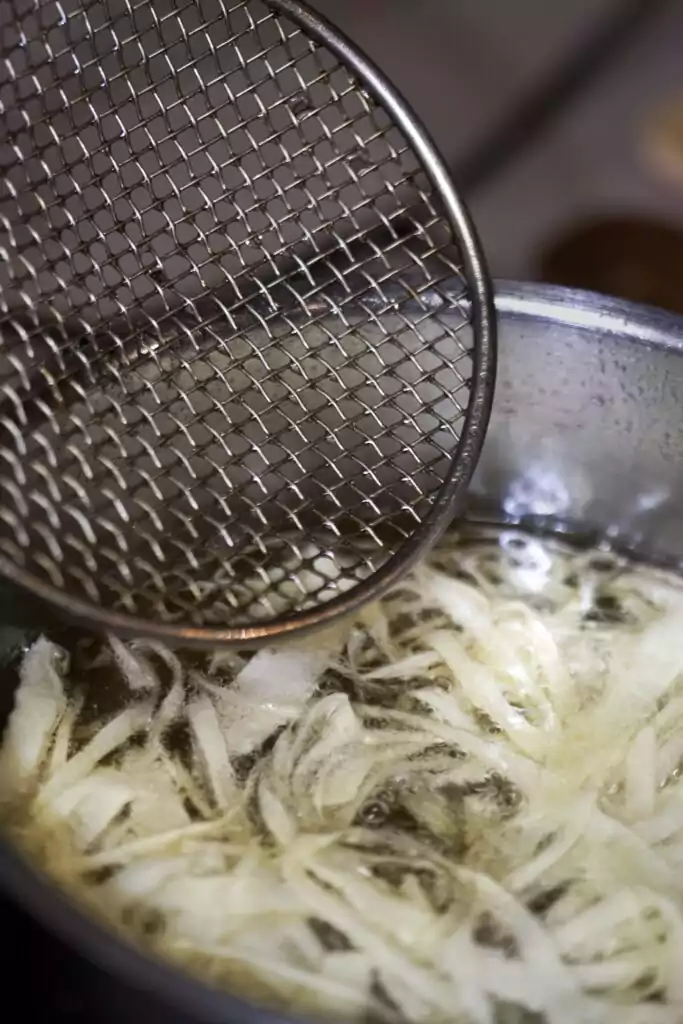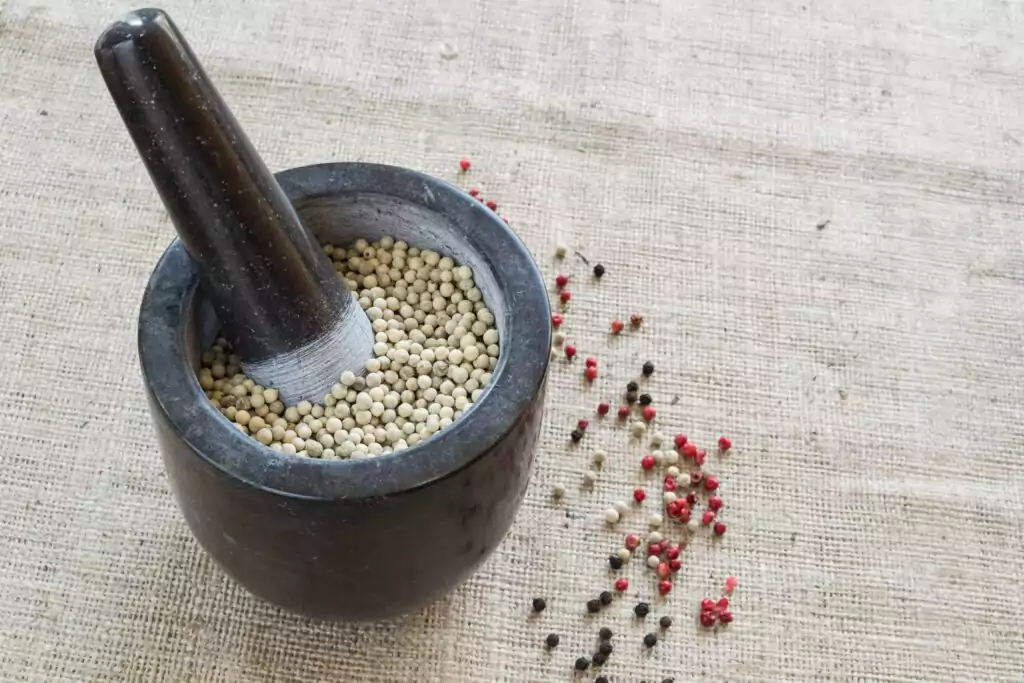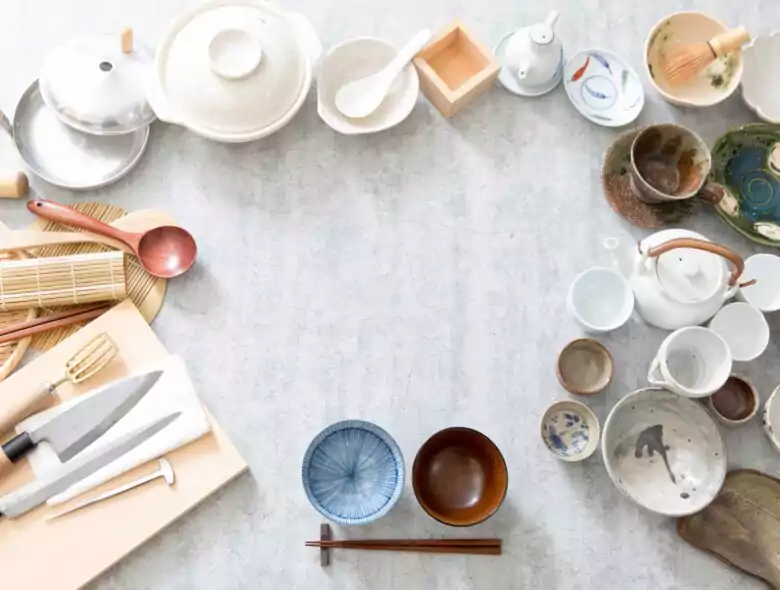Every culture will have adapted its kitchen appliances, utensils, china, and crockery in order to cater to their staple diet and Japan is no different. Taking into consideration the ingredients used, method of cooking, and type of meals prepared in Japan, one will find when a shop that there are some kitchen tools, appliances, and utensils that can be unique to or more prevalently used in Japanese cooking.
The same applies to the layout, design, and size of kitchens – in Japan, kitchens may differ greatly from say kitchens in Europe. If there’s a particular style or layout that is a requirement for you when house or apartment hunting, why not check out property rentals by Village House to see if they can’t accommodate your needs?

Skimmer
A skimmer is a flat, sieve-like scooper or spoon that is used for skimming cooking liquids free of fat, ingredients, food bits, etc. This is a common kitchen utensil in Japanese kitchens as it is used for skimming the dredges and fat from the surface of broths, soups, and stews. Skimmers are also used to separate and pick up the fried pieces of panko breadcrumbs used for coating ingredients before deep frying things like tempura.
Strainer
A strainer is a wire-mesh kitchen sieve made out of metal or silicone. It is used to separate liquids from solids in cooking and in Japan, strainers are usually paired with an implement called a miso muddler. Miso muddlers are used to dissolve miso paste into soup and the strainer helps prevent lumps of miso paste from falling into the soup.

Mortar and Pestle
A mortar and pestle are used for grinding, crushing, pounding, mashing, and turning ingredients such as seeds, nuts, spices, and herbs into pastes, powders, or smaller pieces.
Japanese-style mortar and pestles are respectively known as suribachi and surikogi and are used in Japanese cooking to grind ingredients such as sesame seeds and to mix and crush ingredients together to make dipping sauces.
Grater
A grater is a kitchen tool with a rough, somewhat sharp surface that is used for cutting or shredding food and ingredients into smaller pieces. In Japan, graters are used to grate ginger, slice daikon into smaller pieces, and cut up onions.
Chopsticks
Chopsticks are known in Japan as hashi and this eating implements can trace its roots and history back to the Han people of China. Chopsticks themselves date back to at least 3000 years ago and were introduced to Japan around 603AD.
In Japan, chopsticks are typically made from wood or bamboo and Japanese chopsticks tend to be shorter in stature and tapered at the ends for a sharper look.
Chopsticks are versatile kitchen utensils for cooks in Japan as they can be used for pinching, dividing up, gripping, separating, whisking, sautéing, etc. ingredients and food.
A variation of chopsticks is long chopsticks, which are twice the size of regular eating chopsticks. These chopsticks are reserved for cooking alone and can be used to scramble eggs, stir fry ingredients, cook noodles, pick up ingredients from the fryer and hot pots, etc. Some cooks and chefs even use long chopsticks as a kind of temperature checker when deep frying foods such as tempura.
Conclusion
In conclusion, the type of ingredients used and the type of food preparation and eating in a culture country can determine the type of cooking tools, appliances, and utensils found in kitchens and shops of that country. Some may look familiar, while others may not; and some, though familiar, maybe be used in a way not previously thought of.
If you’re looking to outfit your new apartment with some kitchen appliances but don’t want the headache of trying to sell or get rid of them upon moving out, Village House has a service where you can rent household and kitchen appliances for a monthly or yearly fee.
Related articles:
- How to Organize a Small Kitchen! 7 Kitchen Storage Ideas to Follow
- Useful Things for Your Kitchen to Make Your Life Easier
- Five Tips for Organizing Your Kitchen
- Essential Kitchen Appliances
- Cleaning Your Kitchen



